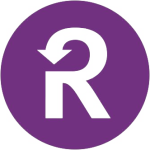About Vertica Analytics Platform
Extract, transform, and load data to Vertica. Ingest data from Vertica and load to other destinations.
About Recurly
Recurly is a subscription management service that is designed to provide a variety of billing models to its users - per month, per usage, etc., - and then process recurring charges through those models. Recurly can use data gathered from subscriptions to generate analytics for a company. It also supports integrations with other sales management tools. These can provide users with a more seamless experience and deeper analytic data.
Popular Use Cases
Bring all your Recurly data to Amazon Redshift
Load your Recurly data to Google BigQuery
ETL all your Recurly data to Snowflake
Move your Recurly data to MySQL
Vertica Analytics Platform's End Points
Vertica Massively Parallel Processing (MPP)
Through its MPP architecture, Vertica distributes requests across different nodes. This brings the benefit of virtually unlimited linear scalability.
Vertica Column-Oriented Storage
Veritica's column-oriented storage architecture provides faster query performance when managing access to sequential records. This advantage also has the adverse effect of slowing down normal transactional queries like updates, deletes, and single record retrieval.
Vertica Workload Management Automation
With its workload management features, Vertica allows you to automate server recovery, data replication, storage optimization, and query performance tuning.
Vertica Machine Learning Capabilities
Vertica includes a number of machine learning features in-database. These include 'categorization, fitting, and prediction,' which bypasses down-sampling and data movement for faster processing speed. There are also algorithms for logistic regression, linear regression, Naive Bayes classification, k-means clustering, vector machine regression/classification, random forest decision trees, and more.
Vertica In-Built Analytics Features
Through its SQL-based interface, Vertica provides developers with a number of in-built data analytics features such as event-based windowing/sessionization, time-series gap filling, event series joins, pattern matching, geospatial analysis, and statistical computation.
Vertica SQL-Based Interface
Vertica's SQL based interface makes the platform easy to use for the widest range of developers.
Vertica Shared-Nothing Architecture
Vertica's shared-nothing architecture is a strategy that lowers system contention among shared resources. This offers the benefit of slowly lowering system performance when there is a hardware failure.
Vertica High Compression Features
Vertica batches updates to the main store. It also saves columns of homogenous data types in the same place. This helps Vertica achieve high compression for greater processing speeds.
Vertica Kafka and Spark Integrations
Vertica features native integrations for a variety of large-volume data tools. For example, Vertica includes a native integration for Apache Spark, which is a general-purpose distributed data processing engine. It also includes an integration for Apache Kafka, which is a messaging system for large-volume stream processing, metrics collection/monitoring, website activity tracking, log aggregation, data ingestion, and real-time analytics.
Vertica Cloud Platform Compatibility
Vertica runs on a variety of cloud-based platforms including Google Cloud Platform, Microsoft Azure, Amazon Elastic Compute Cloud, and on-premises. It can also run natively using Hadoop Nodes.
Vertica Programming Interface Compatibility
Vertica is compatible with the most popular programming interfaces such as OLEDB, ADO.NET, ODBC, and JDBC.
Vertica Third-Party Tool Compatibility
A large number of data visualization, business intelligence, and ETL (extract, transform, load) tools offer integrations for Vertica Analytics Platform. For example, Integrate.io's ETL-as-a-service tool offers a native integration to connect with Vertica.
Recurly's End Points
Recurly Subscriptions
Track data about the status of a customer’s subscription - recurring, new, canceled, etc., - and which plans they are subscribing to. This data can help demonstrate the success or failure of various subscription models and show the most popular time periods to subscribe.
Recurly Transactions
Retrieve data about any purchase or payment processed through Recurly, including the amount of the transaction, customer contact information and the status of the transaction i.e.,whether it is declined, voided, or successful. This data can then be used to provide analytics about the actual revenue being generated by your company.
Recurly Invoices
Gather all of the information related to an invoice that has been sent to a customer, including charges, refunds, credits and discounts. This field also includes the payment history for invoices, which can be used to track trends and help with predictive analysis.
Recurly Plans
Set up and detail the various plans that your subscriptions use. This field includes data about the plans - how much they costs, what the billing rates are, etc., - and also provides customer data about who is using what plans. This can assist in scoring leads and segmenting your customers by lifecycle stage.
Recurly Accounts
Store all of your data about a customer’s account, including contact information and billing history. You can also use this to track a customer’s current and historical subscription data, which can provide you with insights into your general business performance and help you determine which subscription plans are most profitable.








